源氏物語絵巻や、ひな祭りの雛人形。私たちが平安時代の雅な世界を思い浮かべるとき、そこには必ず色鮮やかな「十二単(じゅうにひとえ)」をまとった女性の姿があります。絹を幾重にも重ねたその姿は、日本の伝統衣装の中でも究極の美しさと言えるでしょう。しかし、その名前とは裏腹に、必ずしも12枚の着物を着ていたわけではないことをご存知でしょうか?
- 「十二単」はニックネーム:本当は12枚ではなかった?
- 自然を写し取る美学:「襲(かさね)の色目」という色彩マジック
- 平安貴族のファッション哲学:動きやすさより「見せる」ための装い
名前の謎:十二単は十二枚ではない
まず驚くべき事実は、「十二単」という名称は、実は後世になって付けられた俗称(ニックネーム)であるということです。その正式名称は**「女房装束(にょうぼうしょうぞく)」、あるいは「唐衣裳装束(からぎぬもしょうぞく)」**と言います。
ではなぜ「十二」という数字が付いたのでしょうか。これは、必ずしも枚数を指すわけではなく、「十二分」という言葉があるように、「たくさん重ねている」という意味合いで使われたと考えられています。平安時代のファッションリーダーたちは、季節や自身のセンスに合わせて、時には20枚近くも衣を重ねることがあったと言われています。つまり十二単とは、平安時代の高貴な女性たちがまとった、豪華な重ね着スタイルの総称なのです。
一枚一枚に意味がある:十二単の構造を分解
見るからに複雑そうな十二単ですが、その構造は一定の決まりに沿って構成されています。内側から順に、主要なパーツを見ていきましょう。
- 小袖(こそで): 今でいう下着にあたる、絹の白い着物。
- 長袴(ながばかま): 緋色(ひいろ)の長い袴。十二単のスタイルを特徴づける重要なパーツです。
- 単(ひとえ): 長袴の上に着る、裏地のない着物。季節によって様々な色が使われました。
- 五衣(いつつぎぬ): 「襲の色目」を表現する中心となる、5枚の「袿(うちき)」という着物。少しずつずらして重ね、袖口や裾に美しい色のグラデーションを作り出します。
- 打衣(うちぎぬ): 五衣の上に重ねる、光沢のある生地で作られた赤い袿。砧(きぬた)で打って艶を出したことからこの名があります。
- 表着(うわぎ): 最も外側に着る袿で、豪華な織り文様が施された、十二単のメインとなる美しい衣です。
- 唐衣(からぎぬ): 表着の上に羽織る、現代のボレロやジャケットのように丈が短く、華やかな上着。
- 裳(も): 腰の後ろにまとい、長く引きずる装飾的な布。平安時代の正装の証です。
これらの衣を順番に重ねていくことで、あの雅なシルエットが完成するのです。
四季をまとう:平安貴族の色彩美学「襲の色目」
十二単の美しさを語る上で、最も重要な要素が**「襲(かさね)の色目(いろめ)」**です。これは、単に好きな色を重ねるのではなく、重ねる衣の色と色の組み合わせによって、季節の移ろいや自然の風景を表現するという、極めて高度で洗練された美学です。
例えば、春には梅の花を表現した「紅梅の匂(におい)」、夏には咲き誇る撫子(なでしこ)を模した色、秋には色づく「紅葉(もみじ)」、冬には雪景色を表す「雪の下」など、数えきれないほどの組み合わせがありました。
どのような「襲の色目」を選ぶかは、その人の教養やセンスを示すバロメーターであり、平安貴族たちはこの色彩マジックに情熱を注いでいたのです。
時代を超えて受け継がれる究極の美
これほどまでに美を追求した十二単ですが、平安時代中期をピークに、武士が台頭する鎌倉時代になると、より動きやすく実用的な「小袖(こそで)」が表着として発展していき、十二単は日常の服飾史から姿を消していきます。
しかし、その究極の美と格式の高さから、日本の正式な装束としての価値は失われませんでした。江戸時代には、宮中儀式の際に着用する礼服として復活し、その伝統は現代にまで受け継がれています。今日では、皇室の方々が御結婚の儀や即位の礼といった、国家の最も重要な儀式で着用されており、私たちはその荘厳な姿を目にすることができます。十二単は、まさに時代を超えて輝き続ける、「日本の美の象徴」なのです。
解説ポイント①:「十二単」はニックネーム:本当は12枚ではなかった?
「十二単」という言葉が文献に現れるのは、実は源平合戦を描いた鎌倉時代の『平家物語』が最初とされています。平安時代当時は、重ねる袿の枚数を「〇領(りょう)の御衣(おんぞ)」などと数えていました。ではなぜ「十二」だったのか。一説には、仏教の「十二天」や、季節を表す「十二か月」など、古くから「12」が「完璧」や「全てが満ち足りている」ことを示す聖数であったため、豪華な重ね着への最大級の賛辞として「十二単」という言葉が生まれたのではないかと言われています。
解説ポイント②:自然を写し取る美学:「襲(かさね)の色目」という色彩マジック
「襲の色目」は、平安貴族の自然観を映し出す鏡でした。彼らは、ただ美しい花や葉の色を真似るだけでなく、その変化のグラデーションや、情景全体を切り取って衣の上で表現しようとしました。具体的な色の組み合わせを見てみましょう。
- 春「柳がさね」: 表が白、裏が青(緑)。雪解けの下から芽吹く柳の若々しさを表現。
- 夏「花橘がさね」: 表が白、裏が赤。緑の葉に映える白い橘の花と、その実の色を表現。
- 秋「紅葉がさね」: 表が紅、裏が濃い赤。燃えるように色づく紅葉の深みを表現。
- 冬「雪の下がさね」: 表が白、裏が紅梅色。降り積もる雪の下から、春を待つ紅梅がほのかに覗く情景を表現。 これらの詩的なネーミングからも、彼らの繊細な感性の豊かさがうかがえます。
解説ポイント③:平安貴族のファッション哲学:動きやすさより「見せる」ための装い
十二単の総重量は、時に20kg近くにもなったと言われています。これだけの衣をまとい、長い袴や裳を引きずって歩くことは、極めて困難でした。しかし、それで良かったのです。なぜなら、当時の高貴な女性たちは自ら働くことはなく、その生活空間は御殿の中の限られた一室が中心。彼女たちにとって最も重要なのは「座っているときの美しさ」でした。十二単は、座った際に袖口や裾から見える「襲の色目」のグラデーションが最も映えるように計算されています。つまり、十二単は活動するための「服」ではなく、静止した状態でその美しさを鑑賞するための「着る芸術品」であり、「座るための建築」とも言える存在だったのです。
参考文献
【English Article】
【Jūnihitoe】Wearing the Beauty of Heian Japan: The Secrets of the “12-Layer Robe”
From the Tale of Genji picture scrolls to the dolls of the Hina Matsuri (Doll Festival), when we imagine the elegant world of Heian Japan, the image of a woman clad in a vibrant “jūnihitoe” invariably comes to mind. This attire, with its multiple layers of silk, represents the pinnacle of beauty in Japanese traditional costume. However, contrary to its name, did you know that it didn’t necessarily consist of 12 layers of clothing?
- “Jūnihitoe” is a Nickname: It Wasn’t Really 12 Layers?
- The Art of Capturing Nature: The Color Magic of “Kasane no Irome”
- The Fashion Philosophy of Heian Aristocrats: Attire for “Showing,” Not for Moving
The Mystery of the Name: The Jūnihitoe Was Not Twelve Layers
A surprising fact is that the name “jūnihitoe” is actually a popular term coined in later eras. Its formal name is “nyōbō shōzoku” (court lady’s attire) or “karaginu mo shōzoku” (Chinese-style jacket and skirt-train attire).
So why was the number “twelve” used? It is believed that this number does not literally refer to the quantity but was used metaphorically to mean “many layers,” similar to how the number is used in other contexts to imply fullness. It is said that the fashion leaders of the Heian period sometimes wore nearly 20 layers, depending on the season and their personal taste. In essence, the jūnihitoe is a general term for the luxurious layered style worn by noblewomen of the Heian period.
Meaning in Every Layer: Deconstructing the Jūnihitoe
While it looks complex, the structure of the jūnihitoe follows a set order. Let’s examine the main components from the inside out.
- Kosode: A white silk garment, equivalent to modern undergarments.
- Nagabakama: Long, crimson-red trousers (hakama). A key element that defines the jūnihitoe style.
- Hitoe: An unlined robe worn over the nagabakama. Various colors were used depending on the season.
- Itsutsuginu: Five “uchiki” robes that form the core of the “kasane no irome” color scheme. They are layered with slight offsets to create a beautiful color gradation at the cuffs and hem.
- Uchiginu: A glossy, red uchiki worn over the itsutsuginu. Its name comes from being pounded with a “kinuta” (a wooden block) to create a sheen.
- Uwagi: The outermost uchiki, featuring gorgeous woven patterns, serving as the main, beautiful robe of the jūnihitoe.
- Karaginu: A short, wide-sleeved jacket worn over the uwagi, similar to a modern bolero.
- Mo: A decorative train of cloth worn at the back of the waist, trailing long behind. It was a symbol of formal attire in the Heian period.
By layering these garments in order, the famously elegant silhouette is created.
Wearing the Four Seasons: The Heian Aristocracy’s Color Aesthetic, “Kasane no Irome”
The most crucial element in the beauty of the jūnihitoe is the “kasane no irome” (the layered color combinations). This was not simply layering favorite colors, but a highly advanced and sophisticated aesthetic that expressed the changing of seasons and natural scenery through the combination of garment colors.
For example, there were countless combinations, such as “kōbai no nioi” (fragrance of the red plum) for spring, colors imitating the blooming dianthus flowers for summer, “momiji” (maple leaves) for autumn, and “yuki no shita” (under the snow) for winter.
The choice of “kasane no irome” was a barometer of a person’s cultural refinement and taste, and the Heian aristocrats poured their passion into this magic of color.
The Ultimate Beauty Passed Down Through the Ages
The jūnihitoe, which pursued beauty to such an extent, reached its peak in the mid-Heian period. With the rise of the samurai class in the Kamakura period, fashion shifted towards the more practical “kosode,” which evolved into outerwear, and the jūnihitoe faded from daily use.
However, its ultimate beauty and high status ensured it was not lost to history. It was revived in the Edo period as ceremonial attire for court rituals, and this tradition has been passed down to the present day. Today, it is worn by members of the Imperial Family at the most important national ceremonies, such as wedding rites and enthronement ceremonies, allowing us to witness its solemn grandeur. The jūnihitoe is truly a “symbol of Japanese beauty” that continues to shine across the ages.
Analysis Point ①: “Jūnihitoe” is a Nickname: It Wasn’t Really 12 Layers?
The term “jūnihitoe” is believed to have first appeared in literature in the Tale of the Heike, a work from the Kamakura period depicting the Genpei War. During the Heian period itself, the number of layered robes was counted as “X-ryō no onzo” (X number of garments). So why “twelve”? One theory suggests that “12” has long been a sacred number signifying perfection and fullness, as seen in the “Twelve Devas” of Buddhism or the “twelve months” of the year. Thus, “jūnihitoe” may have been coined as the highest form of praise for this luxurious layered fashion.
Analysis Point ②: The Art of Capturing Nature: The Color Magic of “Kasane no Irome”
The “kasane no irome” was a mirror reflecting the Heian aristocracy’s view of nature. They sought not just to imitate the colors of beautiful flowers and leaves, but to express their changing gradations and capture entire scenes on their clothing. Let’s look at some specific color combinations:
- Spring “Yanagi-gasane” (Willow Layers): White on the outside, blue (green) on the inside. Expresses the freshness of willows sprouting from under the melting snow.
- Summer “Hanatachibana-gasane” (Tachibana Orange Blossom Layers): White on the outside, red on the inside. Represents the white blossoms and fruits of the tachibana orange against green leaves.
- Autumn “Momiji-gasane” (Maple Leaf Layers): Crimson on the outside, dark red on the inside. Expresses the deep, burning colors of autumn leaves.
- Winter “Yuki no shita-gasane” (Under the Snow Layers): White on the outside, red-plum color on the inside. Depicts a scene of red plum blossoms peeking out from under fallen snow, awaiting spring. These poetic names reveal the richness of their delicate sensibilities.
Analysis Point ③: The Fashion Philosophy of Heian Aristocrats: Attire for “Showing,” Not for Moving
The total weight of a jūnihitoe is said to have sometimes reached nearly 20 kilograms (about 44 pounds). It was extremely difficult to walk while wearing so many layers and dragging a long hakama and mo. But that was perfectly fine. Noblewomen of that era did not perform labor themselves, and their lives were centered in limited rooms within their palaces. For them, the most important thing was “beauty while seated.” The jūnihitoe was designed so that the color gradations of the “kasane no irome” at the cuffs and hem would be most beautifully displayed when sitting. In other words, the jūnihitoe was not “clothing” for activity, but rather a “wearable work of art” and a form of “architecture for sitting,” meant to be admired for its beauty in a static state.

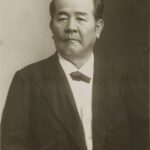
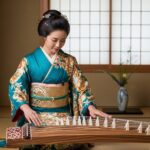
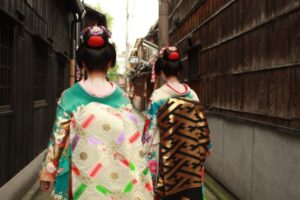
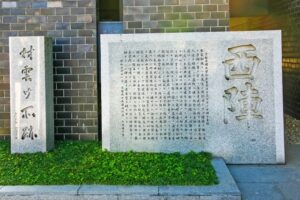
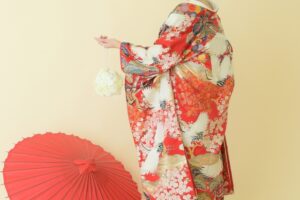
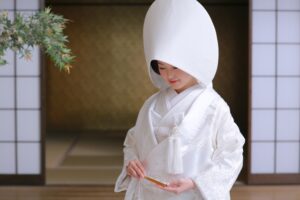
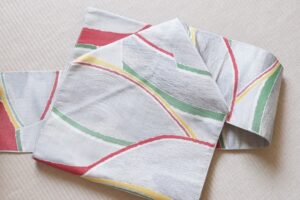


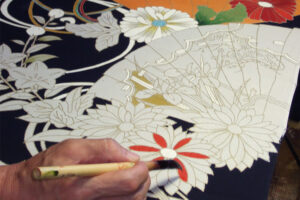
コメントを残す